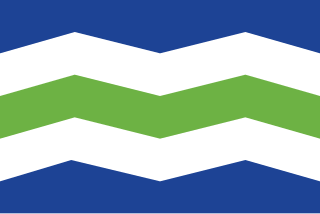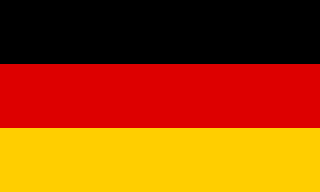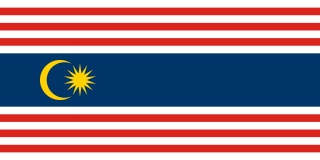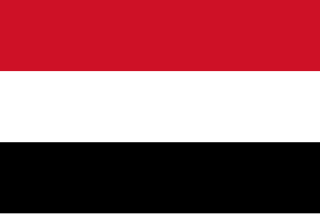 W
WThe national flag of Anguilla, a British overseas territory, consists of a Blue Ensign with the British flag in the canton, charged with the coat of arms of Anguilla in the fly. The coat of arms consists of three dolphins in a circular formation, which were featured on the earlier Anguillan flag, and which stand for friendship, wisdom and strength. The white in the background stands for peace, and the light blue represents the sea, as well as faith, youth, and hope.
 W
WThe national flag of Armenia, the Armenian Tricolour, consists of three horizontal bands of equal width, red on the top, blue in the middle, and orange on the bottom. The Armenian Supreme Soviet adopted the current flag on 24 August 1990. On 15 June 2006, the Law on the National Flag of Armenia, governing its usage, was passed by the National Assembly of Armenia.
 W
WThe flag of Asturias shows the "Cruz de la Victoria" in yellow over blue.
 W
WThe flag of the British Indian Ocean Territory (BIOT) is similar to the flags of other British dependencies and colonies as it has the Union Flag in the upper hoist-side corner. The palm tree and crown are symbols of the Indian Ocean Territory. The Flag was initially intended to be used by the Commissioner but has gained semi-official status as a territorial flag for use on land.
 W
WThe flag of Burlington, Vermont was adopted by Burlington city council on November 27, 2017 during the mayorship of Miro Weinberger. It is five horizontal, zig-zag stripes of blue, white, green, white, and blue.
 W
WThe national flag of Estonia is a tricolour featuring three equal horizontal bands of blue (top), black, and white. The normal size is 105 by 165 centimetres. In Estonian it is colloquially called the "sinimustvalge", after the colours of the bands.
 W
WThe national flag of Croatia or The Tricolour is one of the state symbols of Croatia. It consists of three equal size, horizontal stripes in colours red, white and blue. In the middle is the coat of arms of Croatia.
 W
WThe flag of Georgia, also known as the Five Cross Flag, is one of the national symbols of Georgia. Originally a banner of the medieval Kingdom of Georgia, it was repopularized in the late 20th and early 21st centuries during the Georgian national revival.
 W
WThe flag of Germany is a tricolour consisting of three equal horizontal bands displaying the national colours of Germany: black, red, and gold. The flag was first sighted in 1848 in the German Confederation; with it being officially adopted as the national flag of the Weimar Republic from 1919 to 1933, and again being in use since its reintroduction in West Germany back in 1949.
 W
WThe flag of Kuala Lumpur, Malaysia was officially adopted on 14 May 1990 to commemorate the Dewan Bandaraya Kuala Lumpur (DBKL) or Kuala Lumpur City Hall's 100 years as the local authority of Kuala Lumpur. The flag was designed as a variant to Jalur Gemilang, the Flag of Malaysia, incorporating design elements with its own identity as one of the Federal Territories of the nation. The flag is flown annually on the first day of February, commemorating the day when Kuala Lumpur became a Federal Territory on 1 February 1974.
 W
WThe national flag of Latvia was used by independent Latvia from 1918 until the country was occupied by the Soviet Union in 1940. Its use was suppressed during Soviet rule. On 27 February 1990, shortly before the country regained its independence, the Latvian government re-adopted the traditional red-white-red flag.
 W
WThe flag of Mecklenburg–Vorpommern is the flag used by the German state of Mecklenburg-Vorpommern.
 W
WThe flag of Namibia was adopted on 21 March 1990 upon independence from South Africa.
 W
WThe flag used by the Republic of North Ossetia–Alania and the Republic of South Ossetia is a tricolour, top to bottom white, red, and yellow. The flag is also said to represent the social structure of ancient Ossetian society, which was divided into three social groups forming an organic whole: the military aristocracy, the clergy, and ordinary people. The colours symbolise moral purity (white), martial courage (red) and wealth and prosperity (yellow). In blazons, the flag is described as Per fess Argent and Or, a fess Gules.
 W
WThe flag of Phoenix, Arizona, is the official municipal flag of Phoenix, Arizona. Its current design is simply a maroon field with a white phoenix emblem in the center. The design is the second in the city's history and has been in place since 1990, replacing a flag that was adopted in 1921.
 W
WThe municipal flag of Seattle is teal and white, featuring the Seattle city logo, with the words "City of Goodwill" above and "Seattle" below.
 W
WThe flag of Yemen was adopted on May 22, 1990, the day that North Yemen and South Yemen were unified. The flag is essentially the Arab Liberation Flag of 1952, introduced after the Egyptian Revolution of 1952 in which Arab nationalism was a dominant theme. The Arab Liberation Flag of 1952 served as the inspiration for the flags of both North and South Yemen prior to unification, as well as for the current flags of Egypt, Iraq, Sudan and Syria.